This isn’t the first time you’ve read a post about “How To Write The Best Headlines”. Heck, we’ve even written multiple posts on the subject ourselves, and we plan to write more.
That’s why we’re not going to waste your time talking about how important it is to write great headlines that drive traffic. It’s pretty obvious:
- You want more traffic.
- That’s why you want more people to find you with search engines.
- You want your customers to find your content so valuable that they share it with their networks.
To get technical, you want all that traffic to convert into paying customers. After all, that’s the goal of content marketing, isn’t it?
Writing great headlines is one of the best ways to make your content shareable, get found on search engines, and grow your traffic. Since writing awesome headlines is so important, we thought a tool to help you write the best headlines would be right up your alley.
Write Better Headlines With CoSchedule’s Headline Analyzer Studio
The Headline Analyzer Studio is one of the most popular tools we’ve built. If you’ve never used it before, try giving it a shot.
Now, for anyone who wants to learn the science behind writing the best headlines, here’s how to do it.
We’ve put a lot of time into researching what makes an awesome headline. The Headline Analyzer Studio combines all of that research to scrutinize your headlines for quality metrics that will most likely result in more social shares, SEO value, and traffic.
Recommended Reading:
- Why Headlines Came To Rule The Content Marketing World
- Proof That Emotional Headlines Get Shared More On Social Media
- We Analyzed Nearly 1 Million Headlines. Here’s What We Learned
- Here Are The 101 Catchy Blog Title Formulas That Will Boost Traffic By 438%
- 43 Data-Driven Headline Ideas From 1,000 Of The Most Popular Posts
All you have to do is type your headline into the text box, hit Analyze Now, and the tool provides a report with those quality metrics.
If you love our original Headline Analyzer Studio, upgrade to Headline Studio Pro to unlock premium features. Instantly improve your score with smart suggestions based on millions of words, and feel confident that your headline is written to drive results. Trusted by more than one million marketers, Headline Studio Pro is the headline remedy you’ve always needed.
Analyze more headlines, more quickly with an all-new algorithm. See which types of changes will strengthen your score based on proven data from 4+ million headlines.
How Good Are Your Headlines?
We recently heard a Chief Financial Officer speak about setting goals. One takeaway stuck with us: “What’s your number?”
He asked, “If you prioritized one metric to make a true impact, what would it be?”
The Headline Analyzer Studio does exactly this for your headlines. You get to see your overall headline score on a scale from 0–100. Your “number” to shoot for is anything above a score of 70.

That’s how you can gauge how good your headline is.
Once you know your headline’s score — especially if you’re a bit short from your goal of 70 or more — you can use the Headline Analyzer Studio to understand areas where you’re doing really well or discover the parts you can improve.
Incorporate Keywords to Write the Best Headlines
A big part of content marketing is creating content that is valuable enough to be sought out by your audience. To help your audience find your content, you need to make sure your headlines use the words those folks are searching for.
Every great headline focuses on a keyword. Heck, the long-tail keyword for this post is “how to write headlines”.
The Headline Analyzer Studio will show you the main keywords it assumes your content is about. If your keywords aren’t quite what you need them to be, this is an opportunity to improve.
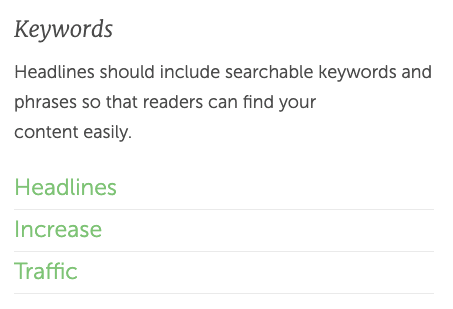
Use that keyword in your URL slug, meta description, subheads, images, graphics, first sentence, last sentence, and body copy. Using your keyword throughout the content—combined with your headline—lets search engines know that your headline really does cover the content in the article.
What Types of Blog Post Headlines Are the Best?
There are a ton of different types of headlines you could write. Some get more traction than others as far as shares, SEO juice, and traffic.
The Headline Analyzer Studio helps you categorize your headline ideas.
List Post Headlines
List post headlines provide ambiguity about the post itself, while arousing your audience’s curiosity.
You’ve seen these everywhere, and for a good reason.
List posts work. Buzzsumo teamed up with OkDork to share data that basically says list posts get the most social shares, after infographics.
These headlines give your readers the chance to skim your subheads to see if they’d like to dive in further.
“How To” Headlines
Like list posts, you’ve seen a lot of “how to” headlines. That’s because… well, they work.
When your audience searches for information, it could be because they want to know how to do something better. That’s where you can step in and provide helpful content to position your business as a source of relevant and useful information.
Brian Clark, from Copyblogger, has some awesome things to say about “how to” headlines:
It’s no secret that ‘how to’ articles… are some of the most sought after, linked to, and bookmarked content online. – Brian Clark
I couldn’t have said it better.
Question Headlines
Question headlines focus on an audience’s needs and imply an answer, if they just click through to read your content.
These headlines are super helpful and relate to how people naturally search for answers: “I have a question. I should ask someone to get the answer.”
The thing is, instead of asking a person, people are turning to search engines, like Google, so figuring out exactly how your audience is asking their questions — then using those keywords in your headline — might be a great way to get the traffic you’re looking for.
Of course, there are multiple ways to use questions in your headlines — not just the problem and solution method. You could imply a “yes” or “no” response, or one that draws on emotions.
Generic Headlines
If list post, “how to”, and question headlines are among the best types of headlines, generic post headlines are a warning that you might be able to improve.
If you have a generic headline, the Headline Analyzer Studio will let you know. This is an opportunity to change the structure of your headline to improve your headline score.
Review Your Word Balance to Write the Best Headlines
For any post, you’ll want a nice balance among common, uncommon, emotional, and power words. A structure like this helps your post remain readable while commanding attention from your audience.
Just type your headline into the Headline Analyzer Studio to see the categories in which your words fall. After you modify your headline a few times, you’ll get a feel for which words fall into the four categories.
Just to give you some background, here’s how your word balance works.
Common Words Should Make Up 20–30% of Your Headline

Common words are ones you use all the time. Common words pull your headlines together in a way that makes sense for readability.
Since commonly occurring words provide the basic structure of your headlines, they should make up about 20–30% of the words in your headlines.

Uncommon Words Should Be About 10–20% of Your Headline

Uncommon words are unique enough to grab your readers’ attention. These words provide substance in your headline.
A mix of 10–20% uncommon words in your headlines should do the trick.
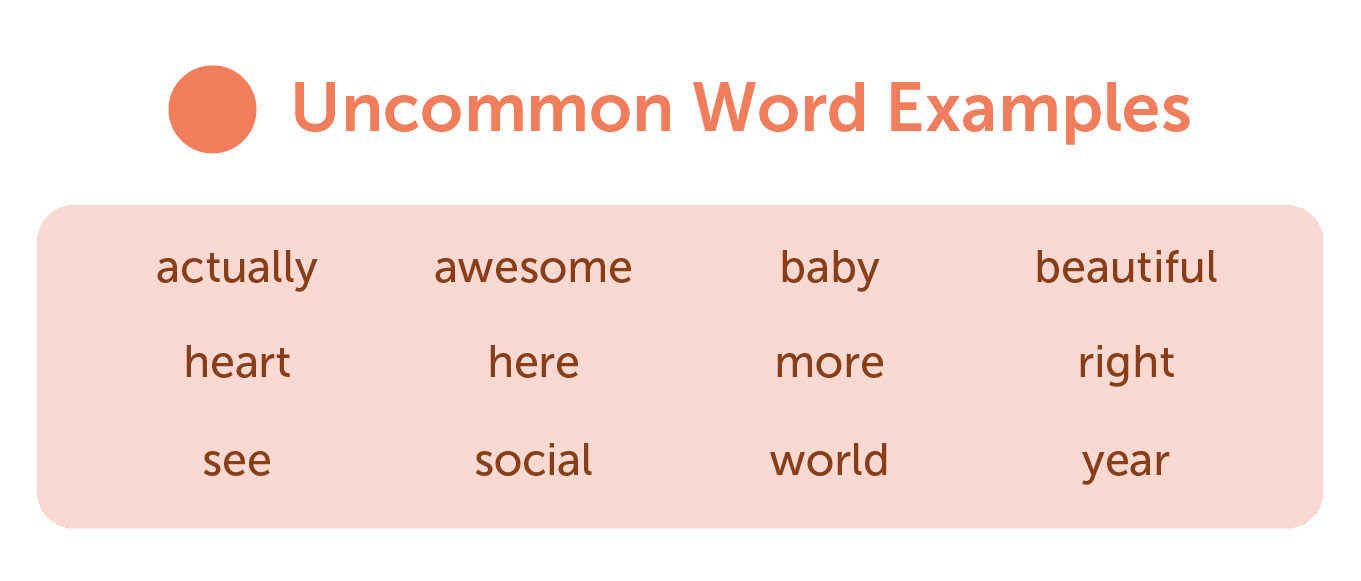
Emotional Words Make a Good Headline at 10–15% Density

Emotional words in your headlines entice your audience to click through to read your post. Once they’re reading your posts with emotional headlines, your readers are more likely to share them.
You have a good headline if 10–15% of the words in your headline are emotional.
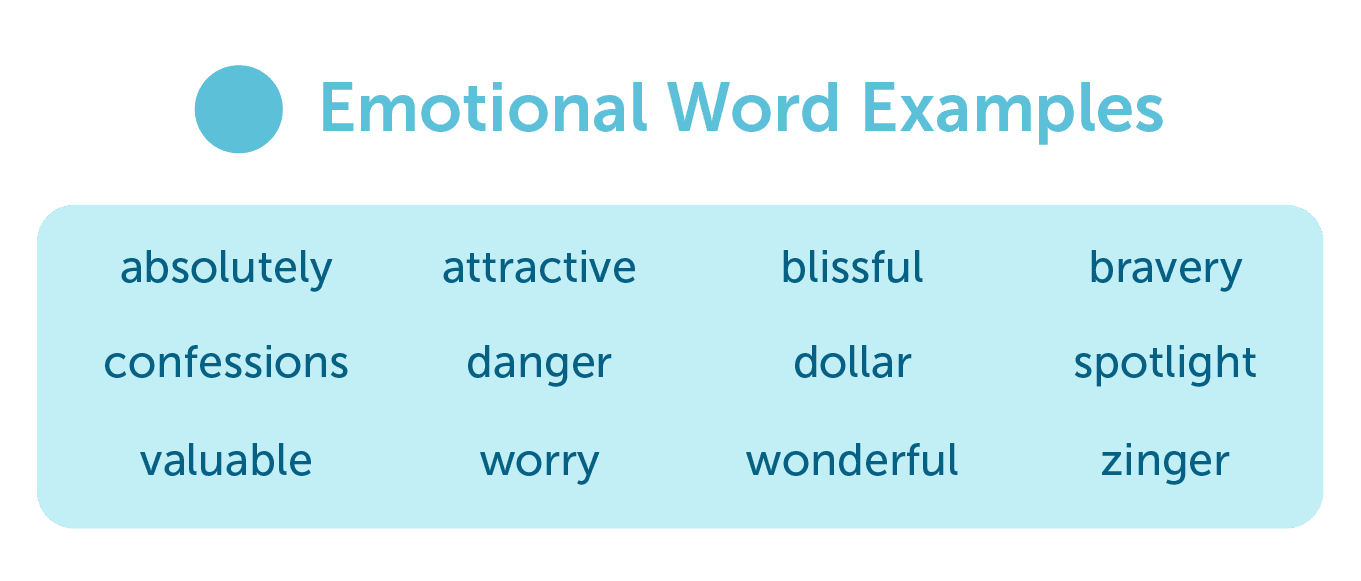
Power Words: Use at Least One in Your Headline

Like emotional words, power words are usually phrases that are well-known for inciting action. Power words are uniquely different than emotional words because they are a bit out of the ordinary.
These words inspire an emotion or call-to-action without a lot of context. Power words are typically rarely-used words or phrases that almost guarantee some clicks through to your blog posts.
Great headlines have at least one power word in them.
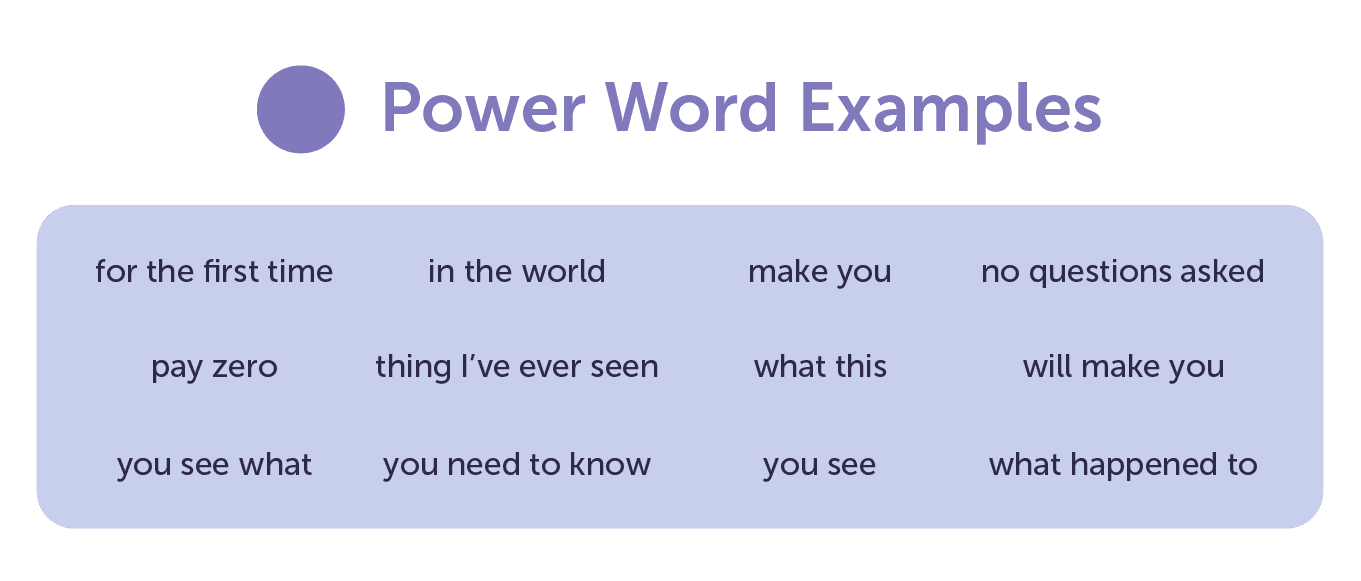
Find the Best Length for Your Blog Post Headlines
Optimal Character Length + Google = Most Click-Throughs
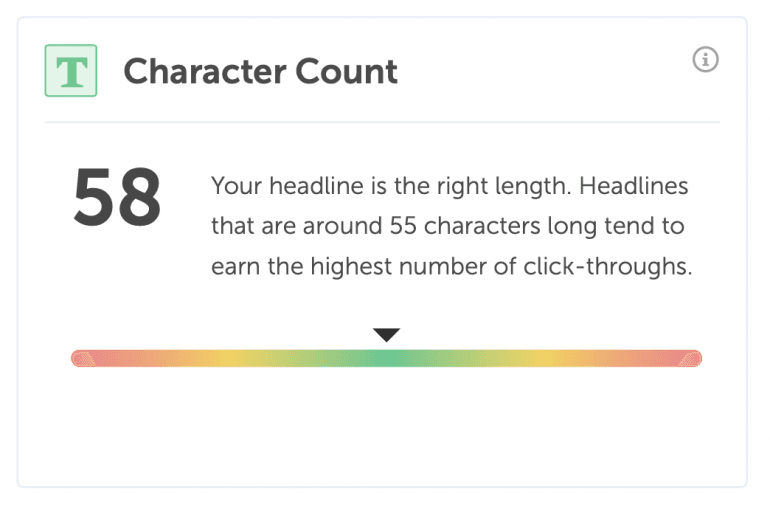
Did you know headlines that are 55 characters long get the highest number of click-throughs? You probably already look at your word count, but characters matter, too.
It also shows you how your post will look in a typical Google search. Keep in mind that Google also recently updated the maximum length of title tags. While they were previously limited to a width of 512 pixels (roughly 50-55 characters), the world’s most popular search engine now displays up to 70 characters in SERPs.
Are You Using Headlines as Email Subject Lines?
You get 20 characters before the average email subject line is cut off.
If you can revise your headline, use your keyword in the first 20 characters to help your audience understand what the email is about.
According to the old journalism idiom:
Don’t bury the lede. It’s more important in subject lines than anywhere else to make sure your keyword is in the first 20 characters.
Amount of Words
Headlines with 6–7 words typically get the best results.
However, different sources say different things about how many words to use in your headlines. A fairly standard best practice is to let 10 words be the maximum you’d ever want to use in a headline.
That said, there are six words that matter the most in every blog post headline: the first three and the last three.
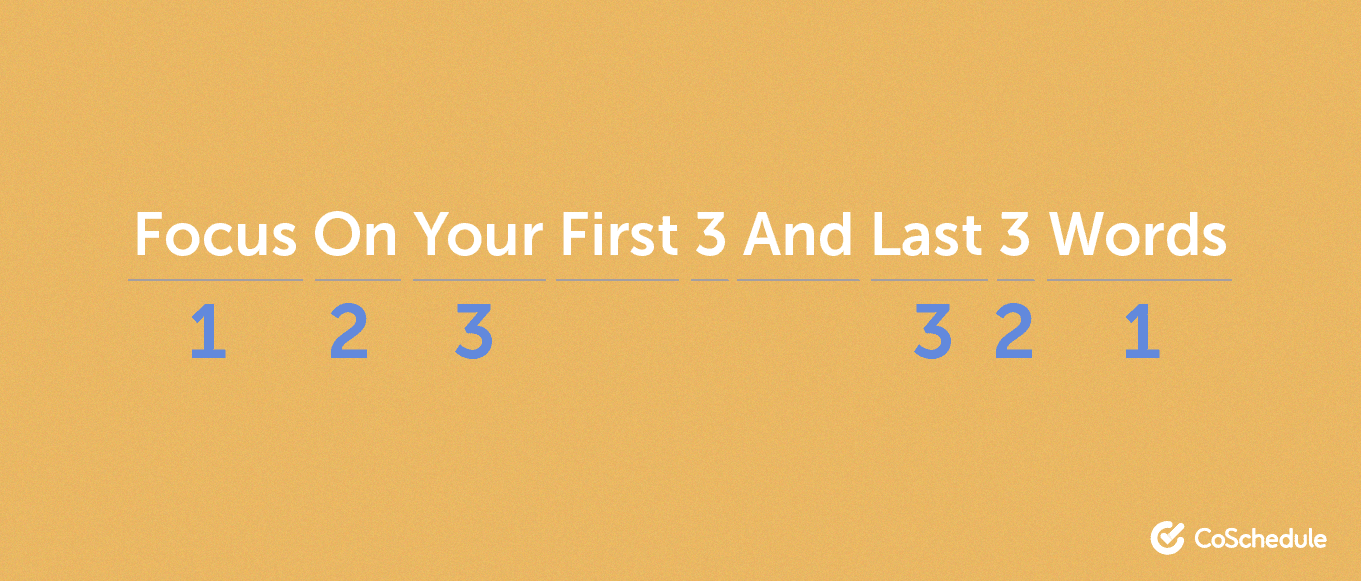
Most readers tend to read the first three and the last three words of a headline. This is just another reason to get your keyword within the first 20 characters of your headline.
Sunshine and Rainbows Make Fantastic Headlines
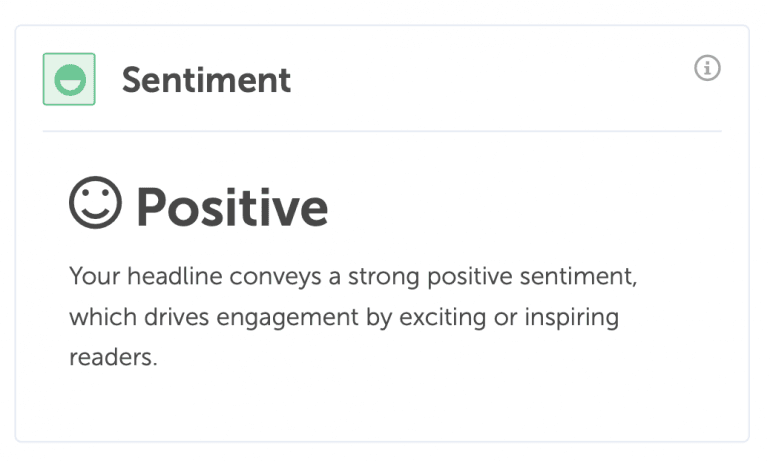
Is your headline positive or negative? Research proves that positive headlines that convey stronger emotions tend to perform better than negative sentiment.
When we researched the emotional marketing value of headlines, we looked at Dr. Hakim Chishti’s work. He found that emotional language creates a very predictable response. Headlines that affect very strong emotions — whether positive or negative — often get the best results. If your headline falls in the middle of these extremes, it’ll probably get less traction.
To connect that research with your headline: strongly positive emotions tend to get shared more than anything else. You can go negative, but it can be difficult to nail perfectly.
The Headline Analyzer Studio points this out, so you can modify your headline from the get-go.
Write Better Blog Post Headlines to Get Better Results
We know, from Copyblogger, that eight of ten people — a staggering 80% of your audience — will only see your headlines and nothing else. Only two of those ten — 20% — will read your article.
Your headline exists to entice your readers to dig deeper into your content.
As they dig deeper, your traffic grows. If your audience really enjoys what you have to say, they’ll share it with their networks. Once that happens, you should get more traffic — therefore, rise in the ranks of the search engines.
It all begins with a few simple words, right? If you spend your time writing an awesome post, you should pay attention to the science of making the headline awesome, too.

